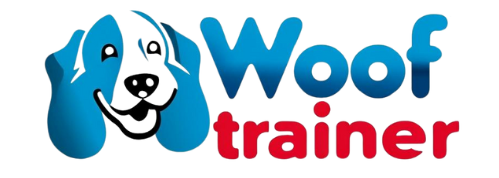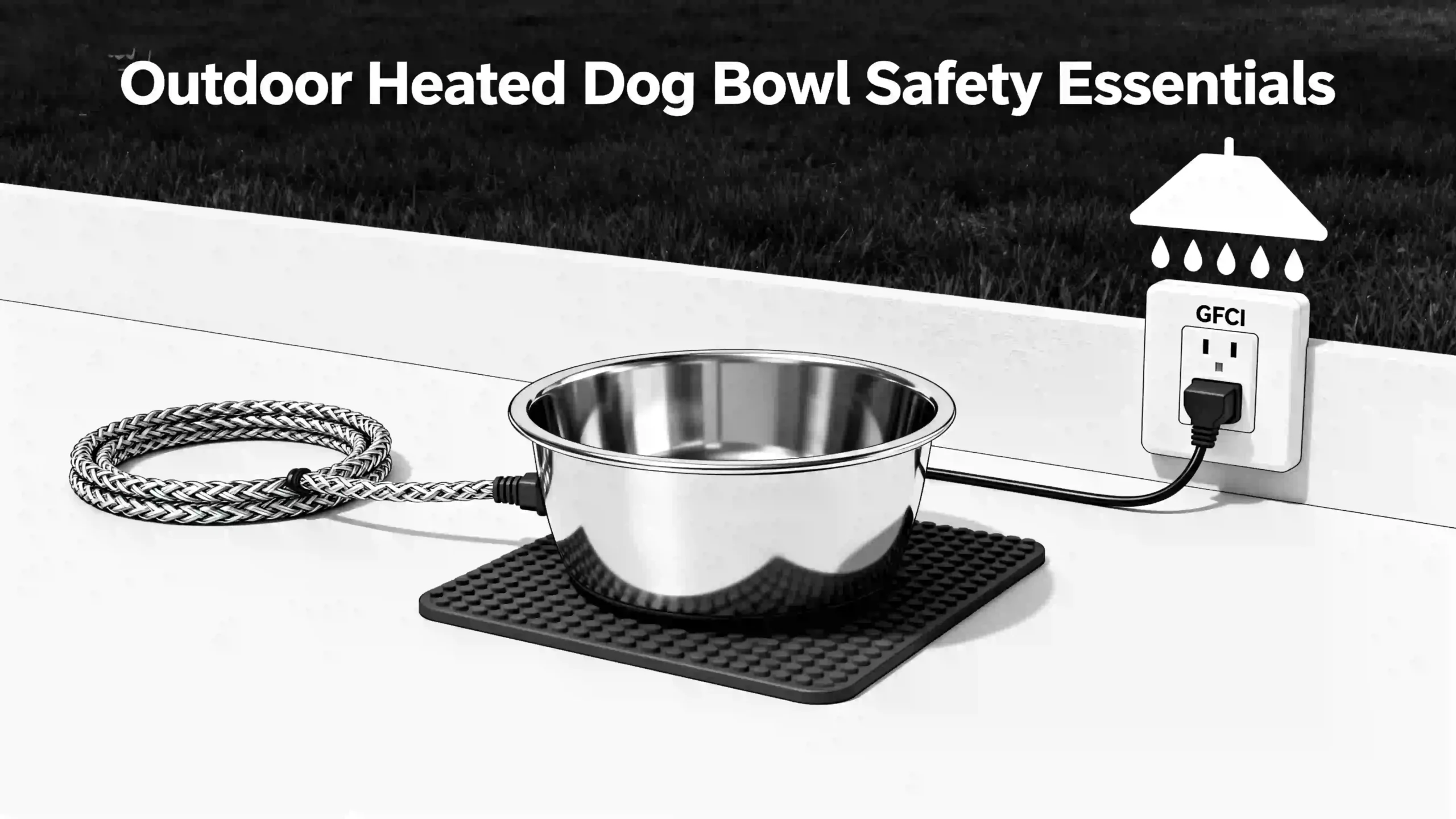If you live in a cold-winter suburban or rural area with breeds like Huskies, Labradors, or Shepherds, outdoor pet safety becomes a priority when using electric heated dog bowls. You want to keep your dog hydrated without worrying about frozen water, but you also want to avoid accidents, shocks, or breakdowns. Here are practical safety tips you can follow to make sure your heated bowl setup works well and safely in winter.
1. Choose a Certified, Low-Voltage or Safety-Rated Unit
- Always check for safety certifications (UL, ETL, CSA or equivalent) on electric pet products. These indicate the product has been tested for household and outdoor use.
- Prefer low-voltage heating systems. For example, the WoofTrainer Heated Dog Bowl uses a 24V low-voltage supply, which greatly reduces risk of electrical shock compared to mains voltage units. Its food-grade 18/8 stainless steel build also aids safety and durability.
- Inspect the heating element design: buried or recessed elements are better than exposed ones; protective casings help prevent water or snow infiltration.
2. Use a Chew-Proof Cord and Cord Protection
- Dogs, especially puppies or curious breeds, may chew cords. Always choose a bowl with a chew-proof cord or one wrapped in steel mesh or other durable material. The WoofTrainer heated bowl uses a stainless-steel wrap for its 1.3-meter power cord.
- Route the cord so it isn’t dangling or free on the ground. Clip it up, if possible, run it through cord covers, or use conduit, to reduce risk of chewing and moisture damage.
- Regularly inspect cord insulation. Cracks, fraying, or chewing damage are warning signs. Replace or repair before they lead to risk.
3. Maintain Proper Water Levels and Clean Regularly
- Never allow the bowl to run dry while the heater is on. If water level dips too low, the heating element can overheat or be exposed to air, which may damage it or even pose fire risk.
- Clean the bowl on a regular basis. Warm, moist water encourages bacteria or algae growth. Stainless steel or BPA-free materials help with ease of cleaning and reducing contamination.
- Remove ice or snow that accumulates around or inside the bowl, since that can reduce heater effectiveness or cause uneven heating.
4. Position the Bowl in a Safe, Sheltered Location
- Place your heated bowl under shelter (porch overhang, barn opening, or shed) to minimize exposure to direct snow, sleet, and wind. Wind can cool the water’s surface quickly, increasing load on the heater.
- Keep it off the ground if possible: elevate slightly to prevent snowdrifts or standing water around the base. A rubber base or ring helps prevent tipping, especially when dogs drink eagerly or step into the dish.
- Avoid placing near electrical outlets or cords in flood zones. Use outdoor-rated plugs, enclosures, and make sure any sockets are GFCI (Ground Fault Circuit Interrupter) protected.
5. Use Thermostatic Controls and Monitoring
- Choose units with thermostats or temperature sensors. These allow the bowl to heat only when needed (say when ambient temp drops below ~0 °C), and turn off when water is warm enough. This reduces wasted electricity and lowers safety risks from overheating.
- Frequently check performance: during extended cold snaps, verify the water remains liquid, and that no part of the heater is excessively hot to touch.
- If using timers or smart-outlets, consider scheduling checks or setting alerts so you know if the bowl fails (e.g. after power outages).
6. Inspect Power Supply, Outlet, and Electrical Connections
- Ensure any extension cords are outdoor-rated, suitably insulated for cold and moisture, and sized for the current draw of the heated bowl. A small cord designed for indoor use can become a hazard outdoors.
- Use plugs that keep water away from the outlet, or employ weatherproof covers for in-use outdoor plugs. GFCI protection is strongly recommended in any outdoor or semi-outdoor location.
- Keep all electrical connections dry and off the snow or ice. Avoid letting water run down into plugged joints or receptacles.
7. Have Redundant Safety Features
- Use bowls that have tip-resistant bases or rubber rings so that a large dog brushing past doesn’t knock it over. Again, the WoofTrainer base includes a rubber ring to prevent tipping.
- Consider backup systems: if one bowl fails or freezes, a second bowl (perhaps closer to house) ensures water access. This ties in with broader decisions like in Heated Dog Bowls vs Heated Buckets: Which Fits Your Lifestyle where mixing units helps reliability.
- Keep the bowl off during power outages, or have a passive backup (e.g. unheated bowl inside, or insulated water source) so pet still has water access safely.
8. Follow Manufacturer’s Instructions and Replace as Needed
- Read and follow all instructions: installation, cleaning, usage temperature ranges, and limits. Safe use depends on not exceeding designed limits (e.g. never submerge non-waterproof parts).
- Replace parts that wear — cords, thermostats, heating cores — especially if you notice inconsistency in heating or unusual smells or sounds. Better to replace early than risk malfunction in severe cold.
- If you suspect the bowl is getting too hot, or if animals seem reluctant to drink, inspect for internal damage or degradation. Sometimes the problem is subtle (loose wire, cracked insulation).
9. Know Your Dog’s Behavior and Breed Needs
- Some dogs are chewier, more inquisitive; others are more cautious. If your dog tends to paw at bowls or chew things, prioritize chew-proof cord and steel or thick housing materials.
- Consider the breed’s size: large breeds need larger bowls, which obviously require more water (and more power to keep warm), but their reach and weight can also make tipping more likely.
- If your dog refuses to drink from bowls after ice forms, even intermittently, dehydration can become a concern. This is addressed in Why Your Dog Refuses to Drink from Frozen Water Bowls, which shows water temperature and ice film often discourage drinking.
10. Budget Wisely: Safety Isn’t Expensive at the Top End
- While safe heated dog bowl units may cost more upfront (quality cord protection, sturdier housing, thermostat, safety certifications), long-term peace of mind, fewer replacements, and fewer risks make them good value.
- Evaluate warranties, customer reviews for outdoor pet safety. Seek products tested in conditions similar to your winters.
- For example, units like the WoofTrainer strike a balance: moderate price, strong safety features (low voltage, chew-resistant cord wrap, stable base), durable material (18/8 stainless steel), so you avoid extra costs or risks down the road.
Using these tips, you can enjoy the convenience of a heated water setup without compromising safety. A safe heated dog bowl setup helps ensure your dog stays hydrated, comfortable, and protected all through those freezing nights.
You may also like:
For a full overview of features, science, and maintenance in cold weather setups, see Heated Dog Bowls: The Complete Guide to Keeping Pets Hydrated in Winter.
For guidance on how to set up heated bowls on a larger property safely, see How to Install Heated Dog Bowls Safely on the Farm.


